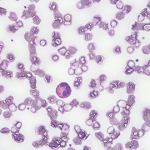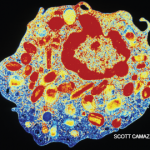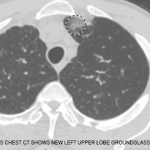Next Steps
Dr. Klion closed with thoughts on next steps in the treatment of these conditions. “Both represent part of the larger umbrella of eosinophilic syndromes. Understanding better the pathogenesis of each—particularly the way in which ANCA may be involved—will be imperative for deciding which targeted therapy may be best. Other targeted therapies are under investigation and hopefully will be options in our armamentarium the near future,” she said.
Ask the Eosinophil Expert
The audience had many questions for Dr. Klion at the end of her talk. She graciously shared her expert knowledge.
Regarding bone marrow biopsies, she said, “We typically do a biopsy in any patient who has an absolute eosinophil count [AEC] of greater than 5,000, or any other markers that could suggest a neoplastic variant. Abnormal peripheral flow cytometry, elevated serum vitamin B12 or serum tryptase levels, or splenomegaly would warrant a biopsy, for example. In many ways, it’s really a very safe procedure, and it makes the patient feel more comfortable that there is nothing going on underneath.”
Regarding infectious evaluations, she said, “There is no specific infectious panel I send for work-up, … and I’m an infectious disease parasitologist. The one caveat I will note is that Strongyloides is worldwide, so I do think about it in every patient. If there is any risk they may be infected, U.S. Centers for Disease Control and Prevention [CDC] serologies are what we use. The commercial tests are not as good. If there is any suspicion, I would treat with ivermectin. Any other parasite testing would really require the right clinical history.”
Regarding other specialists and treatment, Dr. Klion said, “It’s important to remember eosinophils can cause the same clinical presentation no matter what the underlying cause is, and you should involve other specialists if the picture doesn’t fit into yours. Treatment should depend on the presence of end-organ involvement, and not the AEC alone.”
Summary
HES and EGPA represent a spectrum of eosinophilic disorders. Further studies are necessary to differentiate best treatment options for each, but our armamentarium of available options is growing.
Samantha C. Shapiro, MD, is an academic rheumatologist and an affiliate faculty member of the Dell Medical School at the University of Texas at Austin. She received her training in internal medicine and rheumatology at Johns Hopkins University, Baltimore. She is also a member of the ACR Insurance Subcommittee.



